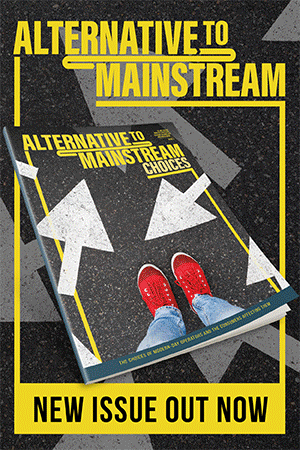How to measure and predict future flavour trends

Our tastes evolve constantly and flavour trends pop up from seemingly nowhere – but is it all as random as it seems, or is there in fact a science to it?
Jason Cohen, founder of the Gastograph AI platform certainly thinks there is. In fact he’s so confident there is that he spoke to a hefty audience of thousands on the subject last month at Puratos’ Taste of Tomorrow event in Chicago. Gastrograph AI is a specialised artificial intelligence platform that understands what consumers taste.
He said simply: “We can help make sure that a new product is something consumers are going to love.”
There could be any number of reasons why a product might fail (branding, distribution, supply chain, pricing). But the most critical thing is the taste of the product. Or as Cohen puts it: “For a product to be successful, you have to get the flavour, aroma and texture right. People have to like the taste of the product.”
Taste over health: flavour profiles
He says taste is a crucial factor when consumers buy bakery, patisserie or chocolate. In fact it’s even more important than health: “It’s funny, but when I ask anyone to choose between a full-flavour pastry or a low-fat or a low-sodium one, they always tell me they prefer the healthy option. But what I see at parties is people choosing the full-flavour option every time. Despite their healthy intentions, they are also looking for something that is going to taste delightful, preferably with new textural properties, new flavour properties or new flavour combinations.”
This inconsistency between what people think or say and what they do leads us directly to the heart of the problem: taste is extremely difficult to measure, but there are three reasons for this, according to Cohen.
1. Taste preferences are constantly evolving
“As people gain new experiences, their preferences shift to different flavours. New flavour experiences and product experiences are constantly being tested. Take New York, for example. Fifteen years ago, Thai food was still pretty exotic there, bringing people new flavours like lemongrass, curries and spices. Now it’s everywhere, with all sorts of specialties like northern Thai, mountain Thai and spicy Thai restaurants.”
He says preferences change with new generations too: “When a new generation comes of age and starts making their own purchases and decisions, they will have been exposed to different flavours and will have developed different preferences. It’s a challenge for companies to become the preference of a new generation.”
2. Labelling specific tastes is difficult
“Who was the first person ever to label vanilla as vanilla? People will use whatever terms they can to describe it. They might say this is deep, this is rich, these notes of spices remind me of sweet and creamy things. When we examine new flavours, aromas and textures, we can sometimes identify what they are. But they might also include new, exotic flavour experiences that have no reference.”
3. Product development is stuck in the past
“There’s no system or platform for updating products to meet changing consumer preferences. And also, most companies now use separate consumer and professional panels for testing. But humans are not sensors: they will always find a way to express their opinions about things. They are not perfectly repeatable. Different people have different sensitivities, vocabularies, different abilities to identify flavour.”
So what’s the answer?
According to Cohen, it’s Gastrograph AI, which models human sensory perception to predict consumer preference. It measures every individual's sensitivities and biases to different flavours, it controls for the perception of the individual caused by their genetics and experiences when analysing the flavour profile of a product. And it uses the data from these individuals to predict the liking or disliking of specific flavour signatures across the population. This way, Gastrograph AI makes predictions that optimise every step in a food or beverage product’s lifecycle - from conception to consumption.
One of its most important benefits, he says, is speed: “Trends and new preferences will evolve faster and faster, making it more important for companies to rapidly formulate new products that respond to changing preferences. The platform makes it possible to quickly adapt to evolving taste profiles. And that’s important, because taste will probably remain the leading determinant in whether someone is going to be a repeat consumer.
“When you see a new product that claims to be organic, all natural, without additives, et cetera, you might buy it because of these claims. That is marketing. But you will only buy it again if you like the taste of the product. So we help companies understand the flavours, aromas and textures that are driving the marketing and we help them hit those targets.”





